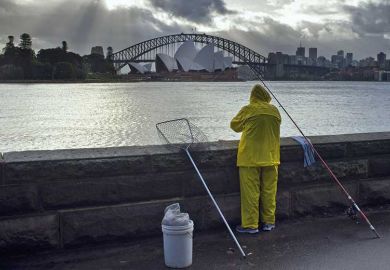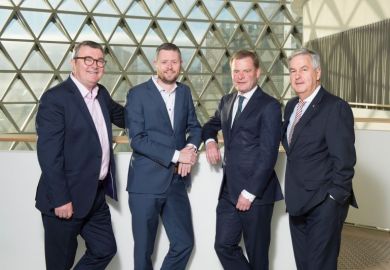Political fiat and institutional cattle-trading might not amount to an auspicious origin for a university. Yet the fact that the University of South Australia has negotiated as an equal with its Group of Eight neighbour, the University of Adelaide, over a proposed merger is testament to just how far that institution has come in the 30 years since its less-than-immaculate conception.
Although the merger talks were ultimately terminated last week, the idea of amalgamating two institutions with very different histories shows how a modern university can quickly attain the institutional clout once viewed as the preserve of the old guard.
Adelaide was South Australia’s only university for almost 100 years after its creation in 1874. By 1966, Flinders University had doubled the count; and there was a plethora of other higher education institutions that, by the late 1980s, had mostly coalesced into three institutions: an agricultural college, the South Australian Institute of Technology (SAIT) and the South Australian College of Advanced Education (SACAE).
Then, the federal government, which provided most of the funding, abolished the binary divide and announced that it would bring the advanced education sector (polytechnics, in the UK vernacular) into the university sector. In South Australia, however, it would fund no more than three universities.
The scramble was on to develop a workable merger model. For about two years, numerous debates and working parties grappled with the issue, but the academics could not agree, and the politicians showed no leadership.
Adelaide was powerful. Its stodgy faculty thought the merger talks beneath them, and all the university-educated state Cabinet ministers were its alumni. Meanwhile, a merger between SAIT and Flinders was torpedoed at the last moment by Flinders academics, who considered their proposed colleagues inferior on account of their practical concerns and paucity of PhDs.
But then a University of Auckland alumnus, Mike Rann, became South Australia’s minister for higher education. He appointed me – a University of New South Wales graduate – to run the ministry. Our task was to crash through – or crash.
After much negotiation, it was proposed that the SAIT and most of the SACAE would be merged, while the agricultural college would go to Adelaide.
Rann, who later went on to become state premier, wanted the new university to focus on, among other things, equity and Indigenous education. The draft legislation was written in one afternoon, but while major educational and student matters were quickly resolved in consultation, some more mundane issues took much longer.
Transferring land titles and assets turned out to be complex and tedious. So did finding an interim leader for the new university – on account of the legislative stipulation that it be a 12-month, non-renewable appointment. For the sake of continuity, the director of the SAIT was offered the role, but he would not accept the title of “interim” vice-chancellor – sorting that took many meetings and negotiations (we caved in eventually).
Then there was the tug of war over the highly regarded and externally well-funded School of Pharmacy. It was located at the SAIT, and the new university desperately wanted to keep it. But Adelaide wanted it as a trophy, and its staff were keen to join Adelaide’s medical school. The government did not have a majority in the upper house, so the legislation to establish the new university was on shaky ground. An intense lobbying campaign threatened to block it if Adelaide didn’t get its way.
Long negotiations led to a Yes Minister solution. In return for passage of the bill, the government agreed to a review of health sciences education (it would have been too crass and narrow to have a review of pharmacy alone). Eminent figures from medicine and education were appointed to conduct it, but when they reported 12 months later, the issue had lost its currency and the School of Pharmacy stayed with the University of South Australia.
Nearly 30 years on, South Australia has overtaken Flinders on most research metrics. It has recently begun jointly operating a multibillion-dollar hospital and health sciences precinct with Adelaide: the cornerstone of any future amalgamation if both parties ever decide to revive unification plans.
Despite last week’s setback, merger advocates will continue to argue that the complementary strengths of the two universities will allow the sum of their parts to be even more competitive. Be that as it may, the fact that the merger was an initiative rather than a grudging response to political coercion underlines that 1990’s ugly duckling has become something of a swan.
Adam Graycar is professor of public policy at Flinders University.
POSTSCRIPT:
Print headline: Ugly duckling takes flight
Register to continue
Why register?
- Registration is free and only takes a moment
- Once registered, you can read 3 articles a month
- Sign up for our newsletter
Subscribe
Or subscribe for unlimited access to:
- Unlimited access to news, views, insights & reviews
- Digital editions
- Digital access to THE’s university and college rankings analysis
Already registered or a current subscriber? Login












